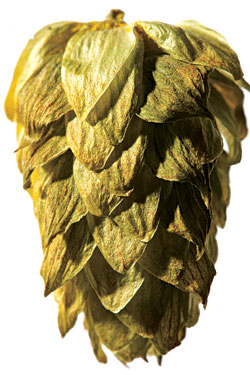
You might think fall beers are all about pumpkins and gingerbread spices. Not quite. When brewed with “wet hops,” the freshly harvested version of the cone-shaped flowers so essential to the brewing process, some early autumnal releases can taste strikingly floral and grassy. The notion of brewing beer with whole fresh hops, rather than their dried, pelletized counterparts, was popularized on the hop-happy West Coast several years ago and has migrated east, where professionals like Southampton Publick House’s Phil Markowski and home brewers like Bierkraft’s Ben Granger have been infusing their wort with freshly picked hops. (Freshness is key: They must be used within 24 hours of harvest.) As ramps are to the locavore chef in springtime, in fact, September’s fresh hops are to the seasonal brewmaster, which is why it’s no surprise that Blue Hill at Stone Barns’ Dan Barber is a fan. His restaurant has dibs on hops grown on the Stone Barns Center property and custom-brewed in infinitesimal quantities by Westchester’s Captain Lawrence Brewing Company, Defiant Brewing Company, and Brooklyn’s Kelso, which will have barely enough fresh-hop pale ale left over to supply a few local bars like Waterfront Ale House. But perhaps the biggest advance in local wet-hop beer production was the recent launch of Sixpoint Craft Ales’ Autumnation, made with Washington State hops and sold by the sixteen-ounce “nanokeg.” It’s got a pungent, spicy nose and a bright and lively bitterness with hints of citrus. Don’t linger, though—supplies are limited, and the fresh-hop flavor is a fleeting thing. “It’s like bread,” says Bierkraft’s Granger, who sampled some fresh-hop casks earlier this month in his biergarten. “It doesn’t improve with age.”